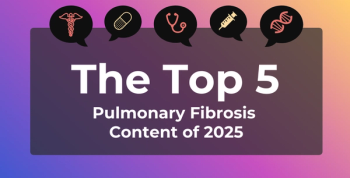
Insulin-Dependent Teens May Benefit From Adjusting Meal Nutrient Composition
A new study challenges assumptions about the role of dietary protein and fat in managing blood glucose fluctuations, known as glycemic variability.
Data from a large observational study of youth living
In T1D, one goal of daily therapy is to reduce persistent episodes of high blood glucose levels (hyperglycemia), which over time can lead to serious complications.
Research has shown that insulin-dependent youth are vulnerable to swings in blood glucose following meals and intensive physical activity. However, there are limited data on how the macronutrient composition of a meal might help maintain stable blood glucose levels, thus reducing glycemic variability. Carbohydrates, fats, and protein are called macronutrients because they are the nutrients used in largest amounts.
“When exploring how meals of different macronutrient content relate to postprandial (following a meal) glycemic variability in youth with T1D, most of the existing studies have been small and used standardized meals,” study authors said. “Researchers have yet to examine how the macronutrient content of nonstandardized meals might relate to youths’ postprandial glycemic variability.”
In their study, which used data from the Type 1 Diabetes Exercise Initiative Pediatric (T1DEXIP) observational study, the researchers assessed how the macronutrient content of typical meals, referred to as free living, influenced postprandial glycemic variability. Additionally, they explored the association between postprandial exercise and exercise intensity in glycemic variability. Consistent with previous trial results, the researchers hypothesized that meals containing larger amounts of carbohydrate, fat, and protein would contribute to greater glycemic variability.
The T1DEXIP study enrolled eligible youth from October 2021 to December 2022. Participants were aged 12 to 17 years, had received their T1D diagnosis at least 3 months prior, followed an intensive insulin regimen for at least 1 month, and reported a moderate to high level of physical activity.
The sample included 208 youth. Their mean (SD) age was 14 (2) years; mean hemoglobin A1C (HbA1C), 7.1% (1.3%) (54 [14.2] mmol/mol); mean BMI percentile, 61% (27%); and mean T1D duration, 5.4 (3.9) years. Forty percent of the youth identified as female; 83%, non-Hispanic White; 7%, Hispanic; 5%, more than 1 race; 2%, Asian; and less than 1%, American Indian/Alaskan Native. For 2%, race/ethnicity was not reported. Over 99% percent used continuous glucose monitoring (CGM).
During a 10-day observation period, the youth maintained their ordinary routines, engaged in usual physical activities and exercise, and consumed typical meals. During the observation period, the researchers collected CGM data. Utilizing online surveys, the youth reported on their insulin regimen, HbA1C, and episodes of severe hypoglycemia or diabetic ketoacidosis. They were trained to use a wrist-worn activity tracker, a study-specific smart phone application to report types of exercise, duration, and perceived intensity; and how to operate a remote food photograph method that quantified the macronutrient content of their free-living meals.
To measure postprandial glycemic variability, the authors calculated SD and coefficient of variation (CV) of glucose for up to 3 hours after meals. They used grams of carbohydrates, grams of protein per kg, and grams of fat to assess whether there was an association with postprandial glucose SD and CV.
Consistent with their hypothesis, the investigators found greater postprandial glycemic variability (SD and CV) following meals with more carbohydrates. Contrary to their hypothesis, their results showed the following:
- Less postprandial glycemic variability following meals with more fat (SD and CV) after adjusting for carbohydrates
- Less postprandial glucose SD following meals with more protein (SD only) after adjusting for carbohydrates; since SD correlates with mean glucose, this finding suggests that more protein may only be reducing the postprandial mean glucose with little effect on postprandial variability
- No significant impact of exercise following meals or intensity of exercise following meals on the associations between the carbohydrate, fat, and protein content of youth’s meals and their immediate postprandial glycemic variability
The researchers noted study limitations. Their study was not designed to adjust for many known factors likely to influence postprandial glycemia, and they recruited youth already engaged in at least moderate levels of daily physical activity and who had a mean HbA1C of 7.1%. These characteristics could possibly make the results less generalizable to typical youth living with T1D.
Still, the researchers said their study extended the literature by exploring postprandial glucose variability in a large sample of insulin-dependent youth consuming their normal nutrient intake.
“Leveraging data from the T1DEXIP observational study was a unique opportunity,” they concluded. “Overall, our results suggest greater glycemic variability following meals higher in carbohydrate content, while we observed lower variability following meals higher in fat or protein.”
Reference
Patton SR, Bergford S, Sherr JL, et al. Postprandial glucose variability following typical meals in youth living with type 1 diabetes. Nutrients. Published online January 4, 2024. doi:10.3390/nu16010162
Newsletter
Stay ahead of policy, cost, and value—subscribe to AJMC for expert insights at the intersection of clinical care and health economics.







































